From the Open-Publishing Calendar
From the Open-Publishing Newswire
Indybay Feature
Development of Maoist Theory and Practice in the Philippines Jose Maria Sison The Commun
The Communist Party of the Philippines (CPP) was reestablished on the theoretical foundation of Marxism-Leninism-Mao Zedong Thought on 26 December 1968. Since 1995, it has officially used the term Maoism as synonym for Mao Zedong Thought. The adoption of the term is due to language alignment in relation to Marxism-Leninism rather than due to any change of meaning or line in relation to Mao Zedong Thought. Since 3 September 1993 in his message to the Symposium on Mao Zedong Thought in Manila, the founding chairman of the CPP has referred to adherents of Mao Zedong Thought as Maoists.
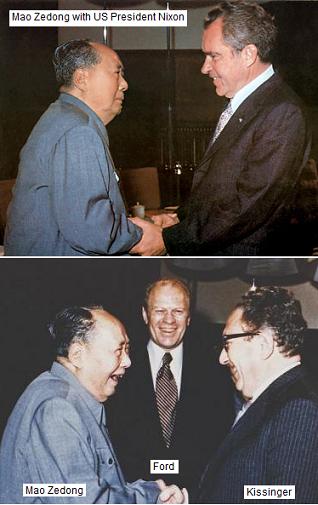
Introduction: Definition of Maoism
The Communist Party of the Philippine stands by its definition of Mao Zedong Thought or Maoism as the third stage in the development of the theory and practice of the revolutionary proletariat towards the ultimate goal of communism. The ongoing stage of Maoism proceeds from the previous stages of Marxism and Leninism, respecting and upholding the theoretical and practical achievements of each stage, extending and developing them further and making new achievements.
Maoism has arisen thus far as the highest stage in the development of the theory and practice of proletarian revolution by confronting the problem of modern revisionism and putting forward the theory and practice of continuing revolution under proletarian dictatorship through cultural revolution in order to combat revisionism, prevent the restoration of capitalism and consolidate socialism. Among the many great achievements of Mao, the aforesaid theory and practice constitutes his greatest. This inspires hope for a socialist and communist future against imperialism, revisionism and reaction.
Mao is indubitably correct in identifying the revisionism of degenerates in power in socialist society as the most lethal to socialism, and in offering the solution that succeeded in China for ten years before it was defeated in 1976. The disintegration of the Soviet Union and the full restoration of capitalism in revisionist-ruled countries in the period of 1989-91 have vindicated Mao´s position on the crucial importance and necessity of the struggle against revisionism and the theory of continuing revolution under proletarian dictatorship.
The Great Proletarian Cultural Revolution (GPCR) can be regarded as the prototype for the ample realization of the theory of continuing revolution in socialist society, like the Paris Commune of 1871 was the prototype for the proletarian class dictatorship that won victory in the October Revolution of 1917. Proletarian revolutionaries can be confident that they are forearmed with the theory behind the GPCR and the experience gained from it in order to face the challenge of revisionism in socialist societies.
Maoism encompasses the major contributions of Mao to further develop such basic components of Marxism as philosophy, political economy, and social science as first laid down by Marx and Engels in the period of free competition capitalism and the rise of the modern industrial proletariat in the 19th century. Maoism also encompasses Mao´s major contributions to further develop Lenin´s earlier theoretical and practical achievements in developing the aforesaid components and to carry forward the great victory of Lenin and Stalin in socialist revolution and construction in the era of modern imperialism and proletarian revolution.
In philosophy, Mao made a penetrating study of the unity of opposites as the most fundamental law in materialist dialectics. He explained the wave-like alternating and interactive advance of theory and practice, and social practice (i.e., production, class struggle and scientific experiment) as the source of knowledge. In political economy, he based himself on the Marxist critique of capitalism and the Leninist critique of modern imperialism, learned from the Soviet experience in socialist revolution and construction, and put forward a political economy of socialism that sought to improve on the pioneering experience of socialist revolution and construction in the Soviet Union.
In social science, Mao followed the teachings of Marxism and Leninism that class analysis is applied on a class society, that class struggle is the key to social progress and that class struggle in bourgeois society must lead to the class dictatorship of the proletariat over the bourgeoisie in the attainment of socialism. Mao´s class analysis of the semicolonial and semifeudal society enabled the Chinese Communist Party to win the people’s democratic revolution with the correct program and strategy and tactics, and proceed to the socialist revolution.
Subsequently, his class analysis of Chinese society in the period of socialist revolution and construction showed the correct handling of contradictions in such society. He reiterated the Leninist thesis that classes and class struggle would continue to exist in socialist society, that the resistance of the defeated bourgeoisie would increase 10,000-fold, and that it would take a whole historical epoch for the proletariat to completely defeat the bourgeoisie. He was well grounded in recognizing the threat of modern revisionism in China and the need for the theory of continuing revolution under proletarian dictatorship.
Mao stressed the necessity and importance of working class leadership through the Party and the basic alliance of the working class and peasantry in the new democratic revolution. He posited that the semicolonial and semifeudal society is in chronic crisis, and that the huge peasant population in the countryside serves as the basis for the strategic line of protracted people’s war and establishment of the revolutionary organs of political power even while the reactionary state still sits in the urban areas.
He developed further the Leninist theory and practice of Party building and pushed forward the rectification movement as an educational method through the mass movement for rectifying major errors and strengthening the Party by raising the revolutionary consciousness and capabilities of the Party and the masses. The rectification movement in the Party was the seminal basis for the conception of the cultural revolution in socialist society.
Mao pointed out that the bourgeoisie, after being politically and legally deprived of the private ownership of the means of production, retreats to the cultural realm to survive and make new recruits even among the children of the working people being educated under the socialist system. The cultural sphere can thus become the breeding ground for bourgeois subjectivist ideas, revisionism and retrogression, unless an indefinite series of proletarian cultural revolutions are undertaken.
Mindful of the way modern revisionism arose in the cultural sphere and then the political sphere in the superstructure in the Soviet Union, Mao put forward the theory and practice of continuing revolution under the dictatorship of the proletariat through the Great Proletarian Cultural Revolution from 1966 to 1976. This involves a process of revolutionizing the relations of production and the superstructure through a mass movement led by the proletariat and its party.
I. Development of Maoism in the Philippines
Prior to the reestablishment of the Communist Party of the Philippines in 1968, we the proletarian revolutionaries in the Philippines, adhered to the teaching of Lenin that there can be no revolutionary movement without revolutionary theory, and that the first requisite in Party building is ideological building. We applied the revolutionary theory of Marxism and Leninism in the formulation of the basic documents of the Congress of Reestablishment: Rectify Errors and Rebuild the Party, Constitution of the Communist Party of the Philippines and Program for a People´s Democratic Revolution.
We read and studied the works of Marx, Engels, Lenin, Stalin and Mao, These included the Communist Manifesto, Das Kapital, Wages, Prices and Profit, Anti-Dühring, Critique of the Gotha Program, Civil War in France, What Is to Be Done, Materialism and Empirio-Criticism, State and Revolution, Two Tactics of Social Democracy, “Left Wing” Communism: An Infantile Disorder, Imperialism: the Highest Stage of Capitalism, Foundations of Leninism, Short History of the CPSU, Selected Works of Mao Zedong, the Polemics on the General Line of the International Communist Movement, the little Red Book of quotations from Mao and major documents of the Great Proletarian Cultural Revolution.
We sought to understand Marxist-Leninist philosophy, political economy, social science, the history of the international communist movement, and the strategy and tactics of the Russian and Chinese revolutions, the then ongoing Vietnamese revolution and other revolutions. With the aid of theoretical studies, we tried to understand the history and situation of the world, the Philippines and the old Communist Party of the Philippine Islands established in 1930 and merged with the Socialist Party in 1938. We read and studied the documents of the old communist party before and after its merger with the socialist party.
We adopted the theory of Marxism-Leninism-Mao Zedong Thought as the guide to revolutionary action. We considered Mao Zedong Thought as the fruit of the long revolutionary experience of the world proletariat under the guidance of Marxism-Leninism, and as the latest, most comprehensive, most profound and most effective instrument for analyzing the history and circumstances of the Filipino people and for setting forth the tasks to accomplish the people’s democratic revolution in preparation for the socialist revolution.
We sought to integrate Maoism with the concrete conditions of the Philippines and with the concrete practice of the Philippine revolution. In this regard, we applied materialist dialectics and class analysis in summing up and analyzing the history of the Filipino people, defining the basic character of Philippine society and recognizing the need for a people´s democratic revolution. These were clearly stated in the basic documents of the Congress of Reestablishment and would be further developed in the book of Amado Guerrero, Philippine Society and Revolution, first published in mimeograph form in 1969 and subsequently in several more editions and translations to this day.
We were inspired and guided by Mao’s class analysis of the semicolonial and semifeudal society. Thus, we were able to understand the character of Philippine society and clarify the need for the people’s democratic revolution, the class leadership of the proletariat, the basic alliance of the workers and peasants against the joint dictatorship of the comprador big bourgeoisie and landlord class servile to foreign monopoly capitalism, the united front policy, the strategic line of protracted people’s war, and the socialist perspective.
With the aid of Mao´s teachings on the building of the Party, the people´s army and the united front, we were able to sum up and analyze the history of the old Communist Party, We criticized the defective ideological foundation of the merger of the communist and socialist parties and mainly the bourgeois subjectivism and major Right and “Left” opportunist errors of the succession of Lava brothers who became general secretary of the Party. Ultimately, we decided to break away from the old party in 1966 and launched in 1967 what is now known as the First Great Rectification Movement (FGRM) that laid the basis for the reestablishment of the Communist Party in 1968.
We issued the basic document of the rectification movement, Rectify Errors and Rebuild the Party, both to criticize and repudiate the errors of the Lava revisionist renegades and to proclaim the urgent necessity of waging the people´s war along the general line of people’s democratic revolution against US imperialism and the local exploiting classes of big compradors and landlords. We committed ourselves to building the three great weapons of the revolution, namely, the Party as the advanced detachment of the proletariat, the revolutionary armed struggle on the basis of the worker-peasant alliance, and the united front of patriotic and progressive forces.
We criticized and repudiated the Right opportunist line of Vicente Lava, which was responsible for breaking up the people’s army into small armed teams of only five members under the “retreat for defense” policy in 1942, generating pessimism and passivity during the war of resistance against Japan, subordinating the people’s army to the US strategic plan to reconquer the Philippines and subsequently welcoming reconquest by the US in 1945, echoing the Browderite “peace and democracy” slogan of the Communist Party of the USA, and demobilizing the people’s army for parliamentary struggle within the framework of the 1946 puppet republic.
We criticized and repudiated the “Left” opportunist line of Jose Lava, which called for waging “all-out armed struggle” and “winning victory in two year’s time”, without paying attention to painstaking mass work and land reform, overestimating the so-called “geometric progression” of the people’s army due to the people´s growing hatred for the corruption of the regime of Elpidio Quirino in 1949, basing the main force of the people´s army in a series of isolated camps in the unpopulated areas of the Sierra Madre mountain range, and launching one wave of offensives and ultimately failing to overcome the enemy counter-offensive in a situation that became purely military.
We criticized and repudiated the “Right” opportunist line of Jesus Lava, which consisted of ordering the conversion of the people’s army into “organizational brigades” for legal struggle in 1955, liquidating the Party branches with the “single file policy” in 1957, disconnecting the party leaders from the remaining units of the people’s army, and failing to generate even a legal mass movement. When we the proletarian revolutionaries started to join the old Communist Party in 1962, not a single Party branch existed. We were the ones who formed the Party branches in localities and Party groups in mass organizations in the 1960s.
The First Great Rectification Movement under the guidance of Mao Zedong Thought provided a sound basis for formulating the Program for the People´s Democratic Revolution, and the Constitution of the Communist Party of the Philippines. In preparing the founding of the New People´s Army on 29 March 1969, we drew inspiration from the victorious people´s war in China and the war of national liberation in Vietnam against the US war of aggression in order to formulate the Rules of the New People´s Army. We criticized and repudiated the Taruc-Sumulong gangster clique for usurping authority over remnants of the old people´s army as well as for perpetuating the mentality and practice of roving rebel bands.
The process of reestablishing the CPP was interconnected with the world proletarian revolution and the struggle against imperialism, modern revisionism and all reaction. We upheld Marxism-Leninism against modern revisionism, which was first espoused by Khrushchov and then by his successor Brezhnev. We had an adequately full view of the ideological debate between the Chinese Communist Party and the Soviet Communist Party. We avidly read and discussed the polemics between the two parties. We sided with the Marxist-Leninist anti-revisionist position of Mao and the Chinese Communist Party.
We studied how modern revisionism had developed to dominate the Soviet Union and other communist parties in Eastern Europe and elsewhere and how the danger of modern revisionism had also emerged in China. On such grounding, we welcomed the theory and practice of the Great Proletarian Cultural Revolution. We took a Marxist-Leninist position against modern revisionism not only on the basis of studying the pertinent events abroad but also on the basis of the struggle against the Lava revisionist renegades who were acting under the influence of the Soviet-centered modern revisionism.
Since 1963, we had criticized and repudiated Khrushchov´s bourgeois populist notions of the “party of the whole people” and “state of the whole people” which denied the proletarian character of the Soviet party and state; and his bourgeois pacifist views, such as “ peaceful transition to socialism” which denied the necessity of revolutionary violence against counterrevolutionary violence, “peaceful economic competition” which gave primacy to economic struggle over political struggle and “peaceful co-existence” which was overstated as the general line of the international movement and not simply the policy governing the diplomatic relations of socialist states with other kinds of states, irrespective of ideology and social system.
The Lava revisionist renegades sought to prevent the criticism of the serious opportunist errors of the Lava brothers from 1942 onwards, and used the Khruschovite notion of “peaceful transition” to buttress their position that there must be an indefinitely long period of legal struggle leading to the general offensive in the form of uprisings. The proletarian revolutionaries took the position that the legal mass movement — especially that of the workers and peasants which they had already started to develop — must serve as the basis for organizing the people´s army and starting the people’s war. We argued that the semicolonial and semifeudal society was in chronic crisis and that the countryside and the peasantry could provide the physical and social terrain for building the people´s army and accumulating strength in stages in accordance with Mao´s teaching on the strategic line of protracted people’s war.
We studied how among various ways the Khruschovite revisionists breached the socialist system by decentralizing the economy and making enterprises and collectives autonomous and individually responsible for their cost and profit accounting, and how in contrast the Brezhnevite revisionists subsequently recentralized major enterprises along the line of state monopoly capitalism in order to assure the central authorities of funding and the ability to engage in the arms race. We studied how the socialist system had been built and how the revisionists were dismantling it in the philosophical, socio-economic, political, military and cultural spheres.
The CPP Congress of Reestablishment in 1968 was attended by twelve delegates (with one in absentia) representing around 80 Party cadres and members. These led hundreds of advanced mass activists who were being prepared for Party membership, and most of whom were leading trade unions and mass organizations of urban poor, peasants, women, youth, professionals and cultural workers. The total number of the organized urban mass base nationwide was at least 30,000. Party membership rose by the hundreds from 1968 to 1971, reaching the 2000 level in 1972 and 4000 in 1974. The Party members came mainly from the trade unions, urban poor community associations and peasant organizations, and from the Kabataang Makabayan (Patriotic Youth).
The Party established the New People´s Army on 29 March 1969 by combining the proletarian revolutionaries and the good elements of the old people´s army who had broken away from the Taruc-Sumulong gangster clique. The Party central leadership based itself in the second district of Tarlac province where the good remnants of the old people´s army had a mass base of 80,000 in several municipalities. Here the New People´s Army started with 60 Red fighters armed with only nine automatic rifles and 26 inferior firearms. Despite starting from scratch, we were optimistic because of the justness of our revolutionary cause and because we were inspired by Mao´s teaching that we could grow from small to big and from weak to strong.
The Party cadres and the armed propaganda teams spread out to do mass work in the countryside of Tarlac and nearby provinces. They formed the barrio (village) organizing committees as the temporary appointive organs of political power. They established the revolutionary mass organizations of workers, peasants, women, youth, children and cultural activists. Drawing the best elements from the mass organizations, Party branches were established as the leading force in the locality and the barrio revolutionary committees were established as elected bodies and as the relatively stable organs of political power.
The Party led the organs of political power and the mass organizations supported them in undertaking mass campaigns and activities related to mass education, mass organizing, land reform, production, health and hygiene, arbitration, and cultural work. To augment and assist the people´s army, the militia units were formed in the villages and all able-bodied men and women in mass organizations served as self-defense units. When a platoon-size strike force was subsequently formed, it coordinated daily with the local guerrilla units, armed propaganda teams and the militia units.
On the basis of the strong mass base, the New People´s Army was able to launch an increasing number of tactical offensives against the enemy. The offensives were carried out by teams, squads and a platoon-size strike force. Through these offensives the NPA increased the number of its automatic rifles from only nine in 1969 to more than 200 by the end of 1970. The enemy reacted with the 5000-strong Task Force Lawin consisting of army, police and paramilitary forces. Known peasant leaders in every village were assassinated. It became a daily and nightly occurrence for the enemy to raid 5 to 10 villages at every given time with the aim of locating the Party central leadership.
To be continued...
Jose Maria Sison
Founding Chairman
Communist Party of the Philippines (CPP)
International League for People's Struggle (ILPS)
The Communist Party of the Philippine stands by its definition of Mao Zedong Thought or Maoism as the third stage in the development of the theory and practice of the revolutionary proletariat towards the ultimate goal of communism. The ongoing stage of Maoism proceeds from the previous stages of Marxism and Leninism, respecting and upholding the theoretical and practical achievements of each stage, extending and developing them further and making new achievements.
Maoism has arisen thus far as the highest stage in the development of the theory and practice of proletarian revolution by confronting the problem of modern revisionism and putting forward the theory and practice of continuing revolution under proletarian dictatorship through cultural revolution in order to combat revisionism, prevent the restoration of capitalism and consolidate socialism. Among the many great achievements of Mao, the aforesaid theory and practice constitutes his greatest. This inspires hope for a socialist and communist future against imperialism, revisionism and reaction.
Mao is indubitably correct in identifying the revisionism of degenerates in power in socialist society as the most lethal to socialism, and in offering the solution that succeeded in China for ten years before it was defeated in 1976. The disintegration of the Soviet Union and the full restoration of capitalism in revisionist-ruled countries in the period of 1989-91 have vindicated Mao´s position on the crucial importance and necessity of the struggle against revisionism and the theory of continuing revolution under proletarian dictatorship.
The Great Proletarian Cultural Revolution (GPCR) can be regarded as the prototype for the ample realization of the theory of continuing revolution in socialist society, like the Paris Commune of 1871 was the prototype for the proletarian class dictatorship that won victory in the October Revolution of 1917. Proletarian revolutionaries can be confident that they are forearmed with the theory behind the GPCR and the experience gained from it in order to face the challenge of revisionism in socialist societies.
Maoism encompasses the major contributions of Mao to further develop such basic components of Marxism as philosophy, political economy, and social science as first laid down by Marx and Engels in the period of free competition capitalism and the rise of the modern industrial proletariat in the 19th century. Maoism also encompasses Mao´s major contributions to further develop Lenin´s earlier theoretical and practical achievements in developing the aforesaid components and to carry forward the great victory of Lenin and Stalin in socialist revolution and construction in the era of modern imperialism and proletarian revolution.
In philosophy, Mao made a penetrating study of the unity of opposites as the most fundamental law in materialist dialectics. He explained the wave-like alternating and interactive advance of theory and practice, and social practice (i.e., production, class struggle and scientific experiment) as the source of knowledge. In political economy, he based himself on the Marxist critique of capitalism and the Leninist critique of modern imperialism, learned from the Soviet experience in socialist revolution and construction, and put forward a political economy of socialism that sought to improve on the pioneering experience of socialist revolution and construction in the Soviet Union.
In social science, Mao followed the teachings of Marxism and Leninism that class analysis is applied on a class society, that class struggle is the key to social progress and that class struggle in bourgeois society must lead to the class dictatorship of the proletariat over the bourgeoisie in the attainment of socialism. Mao´s class analysis of the semicolonial and semifeudal society enabled the Chinese Communist Party to win the people’s democratic revolution with the correct program and strategy and tactics, and proceed to the socialist revolution.
Subsequently, his class analysis of Chinese society in the period of socialist revolution and construction showed the correct handling of contradictions in such society. He reiterated the Leninist thesis that classes and class struggle would continue to exist in socialist society, that the resistance of the defeated bourgeoisie would increase 10,000-fold, and that it would take a whole historical epoch for the proletariat to completely defeat the bourgeoisie. He was well grounded in recognizing the threat of modern revisionism in China and the need for the theory of continuing revolution under proletarian dictatorship.
Mao stressed the necessity and importance of working class leadership through the Party and the basic alliance of the working class and peasantry in the new democratic revolution. He posited that the semicolonial and semifeudal society is in chronic crisis, and that the huge peasant population in the countryside serves as the basis for the strategic line of protracted people’s war and establishment of the revolutionary organs of political power even while the reactionary state still sits in the urban areas.
He developed further the Leninist theory and practice of Party building and pushed forward the rectification movement as an educational method through the mass movement for rectifying major errors and strengthening the Party by raising the revolutionary consciousness and capabilities of the Party and the masses. The rectification movement in the Party was the seminal basis for the conception of the cultural revolution in socialist society.
Mao pointed out that the bourgeoisie, after being politically and legally deprived of the private ownership of the means of production, retreats to the cultural realm to survive and make new recruits even among the children of the working people being educated under the socialist system. The cultural sphere can thus become the breeding ground for bourgeois subjectivist ideas, revisionism and retrogression, unless an indefinite series of proletarian cultural revolutions are undertaken.
Mindful of the way modern revisionism arose in the cultural sphere and then the political sphere in the superstructure in the Soviet Union, Mao put forward the theory and practice of continuing revolution under the dictatorship of the proletariat through the Great Proletarian Cultural Revolution from 1966 to 1976. This involves a process of revolutionizing the relations of production and the superstructure through a mass movement led by the proletariat and its party.
I. Development of Maoism in the Philippines
Prior to the reestablishment of the Communist Party of the Philippines in 1968, we the proletarian revolutionaries in the Philippines, adhered to the teaching of Lenin that there can be no revolutionary movement without revolutionary theory, and that the first requisite in Party building is ideological building. We applied the revolutionary theory of Marxism and Leninism in the formulation of the basic documents of the Congress of Reestablishment: Rectify Errors and Rebuild the Party, Constitution of the Communist Party of the Philippines and Program for a People´s Democratic Revolution.
We read and studied the works of Marx, Engels, Lenin, Stalin and Mao, These included the Communist Manifesto, Das Kapital, Wages, Prices and Profit, Anti-Dühring, Critique of the Gotha Program, Civil War in France, What Is to Be Done, Materialism and Empirio-Criticism, State and Revolution, Two Tactics of Social Democracy, “Left Wing” Communism: An Infantile Disorder, Imperialism: the Highest Stage of Capitalism, Foundations of Leninism, Short History of the CPSU, Selected Works of Mao Zedong, the Polemics on the General Line of the International Communist Movement, the little Red Book of quotations from Mao and major documents of the Great Proletarian Cultural Revolution.
We sought to understand Marxist-Leninist philosophy, political economy, social science, the history of the international communist movement, and the strategy and tactics of the Russian and Chinese revolutions, the then ongoing Vietnamese revolution and other revolutions. With the aid of theoretical studies, we tried to understand the history and situation of the world, the Philippines and the old Communist Party of the Philippine Islands established in 1930 and merged with the Socialist Party in 1938. We read and studied the documents of the old communist party before and after its merger with the socialist party.
We adopted the theory of Marxism-Leninism-Mao Zedong Thought as the guide to revolutionary action. We considered Mao Zedong Thought as the fruit of the long revolutionary experience of the world proletariat under the guidance of Marxism-Leninism, and as the latest, most comprehensive, most profound and most effective instrument for analyzing the history and circumstances of the Filipino people and for setting forth the tasks to accomplish the people’s democratic revolution in preparation for the socialist revolution.
We sought to integrate Maoism with the concrete conditions of the Philippines and with the concrete practice of the Philippine revolution. In this regard, we applied materialist dialectics and class analysis in summing up and analyzing the history of the Filipino people, defining the basic character of Philippine society and recognizing the need for a people´s democratic revolution. These were clearly stated in the basic documents of the Congress of Reestablishment and would be further developed in the book of Amado Guerrero, Philippine Society and Revolution, first published in mimeograph form in 1969 and subsequently in several more editions and translations to this day.
We were inspired and guided by Mao’s class analysis of the semicolonial and semifeudal society. Thus, we were able to understand the character of Philippine society and clarify the need for the people’s democratic revolution, the class leadership of the proletariat, the basic alliance of the workers and peasants against the joint dictatorship of the comprador big bourgeoisie and landlord class servile to foreign monopoly capitalism, the united front policy, the strategic line of protracted people’s war, and the socialist perspective.
With the aid of Mao´s teachings on the building of the Party, the people´s army and the united front, we were able to sum up and analyze the history of the old Communist Party, We criticized the defective ideological foundation of the merger of the communist and socialist parties and mainly the bourgeois subjectivism and major Right and “Left” opportunist errors of the succession of Lava brothers who became general secretary of the Party. Ultimately, we decided to break away from the old party in 1966 and launched in 1967 what is now known as the First Great Rectification Movement (FGRM) that laid the basis for the reestablishment of the Communist Party in 1968.
We issued the basic document of the rectification movement, Rectify Errors and Rebuild the Party, both to criticize and repudiate the errors of the Lava revisionist renegades and to proclaim the urgent necessity of waging the people´s war along the general line of people’s democratic revolution against US imperialism and the local exploiting classes of big compradors and landlords. We committed ourselves to building the three great weapons of the revolution, namely, the Party as the advanced detachment of the proletariat, the revolutionary armed struggle on the basis of the worker-peasant alliance, and the united front of patriotic and progressive forces.
We criticized and repudiated the Right opportunist line of Vicente Lava, which was responsible for breaking up the people’s army into small armed teams of only five members under the “retreat for defense” policy in 1942, generating pessimism and passivity during the war of resistance against Japan, subordinating the people’s army to the US strategic plan to reconquer the Philippines and subsequently welcoming reconquest by the US in 1945, echoing the Browderite “peace and democracy” slogan of the Communist Party of the USA, and demobilizing the people’s army for parliamentary struggle within the framework of the 1946 puppet republic.
We criticized and repudiated the “Left” opportunist line of Jose Lava, which called for waging “all-out armed struggle” and “winning victory in two year’s time”, without paying attention to painstaking mass work and land reform, overestimating the so-called “geometric progression” of the people’s army due to the people´s growing hatred for the corruption of the regime of Elpidio Quirino in 1949, basing the main force of the people´s army in a series of isolated camps in the unpopulated areas of the Sierra Madre mountain range, and launching one wave of offensives and ultimately failing to overcome the enemy counter-offensive in a situation that became purely military.
We criticized and repudiated the “Right” opportunist line of Jesus Lava, which consisted of ordering the conversion of the people’s army into “organizational brigades” for legal struggle in 1955, liquidating the Party branches with the “single file policy” in 1957, disconnecting the party leaders from the remaining units of the people’s army, and failing to generate even a legal mass movement. When we the proletarian revolutionaries started to join the old Communist Party in 1962, not a single Party branch existed. We were the ones who formed the Party branches in localities and Party groups in mass organizations in the 1960s.
The First Great Rectification Movement under the guidance of Mao Zedong Thought provided a sound basis for formulating the Program for the People´s Democratic Revolution, and the Constitution of the Communist Party of the Philippines. In preparing the founding of the New People´s Army on 29 March 1969, we drew inspiration from the victorious people´s war in China and the war of national liberation in Vietnam against the US war of aggression in order to formulate the Rules of the New People´s Army. We criticized and repudiated the Taruc-Sumulong gangster clique for usurping authority over remnants of the old people´s army as well as for perpetuating the mentality and practice of roving rebel bands.
The process of reestablishing the CPP was interconnected with the world proletarian revolution and the struggle against imperialism, modern revisionism and all reaction. We upheld Marxism-Leninism against modern revisionism, which was first espoused by Khrushchov and then by his successor Brezhnev. We had an adequately full view of the ideological debate between the Chinese Communist Party and the Soviet Communist Party. We avidly read and discussed the polemics between the two parties. We sided with the Marxist-Leninist anti-revisionist position of Mao and the Chinese Communist Party.
We studied how modern revisionism had developed to dominate the Soviet Union and other communist parties in Eastern Europe and elsewhere and how the danger of modern revisionism had also emerged in China. On such grounding, we welcomed the theory and practice of the Great Proletarian Cultural Revolution. We took a Marxist-Leninist position against modern revisionism not only on the basis of studying the pertinent events abroad but also on the basis of the struggle against the Lava revisionist renegades who were acting under the influence of the Soviet-centered modern revisionism.
Since 1963, we had criticized and repudiated Khrushchov´s bourgeois populist notions of the “party of the whole people” and “state of the whole people” which denied the proletarian character of the Soviet party and state; and his bourgeois pacifist views, such as “ peaceful transition to socialism” which denied the necessity of revolutionary violence against counterrevolutionary violence, “peaceful economic competition” which gave primacy to economic struggle over political struggle and “peaceful co-existence” which was overstated as the general line of the international movement and not simply the policy governing the diplomatic relations of socialist states with other kinds of states, irrespective of ideology and social system.
The Lava revisionist renegades sought to prevent the criticism of the serious opportunist errors of the Lava brothers from 1942 onwards, and used the Khruschovite notion of “peaceful transition” to buttress their position that there must be an indefinitely long period of legal struggle leading to the general offensive in the form of uprisings. The proletarian revolutionaries took the position that the legal mass movement — especially that of the workers and peasants which they had already started to develop — must serve as the basis for organizing the people´s army and starting the people’s war. We argued that the semicolonial and semifeudal society was in chronic crisis and that the countryside and the peasantry could provide the physical and social terrain for building the people´s army and accumulating strength in stages in accordance with Mao´s teaching on the strategic line of protracted people’s war.
We studied how among various ways the Khruschovite revisionists breached the socialist system by decentralizing the economy and making enterprises and collectives autonomous and individually responsible for their cost and profit accounting, and how in contrast the Brezhnevite revisionists subsequently recentralized major enterprises along the line of state monopoly capitalism in order to assure the central authorities of funding and the ability to engage in the arms race. We studied how the socialist system had been built and how the revisionists were dismantling it in the philosophical, socio-economic, political, military and cultural spheres.
The CPP Congress of Reestablishment in 1968 was attended by twelve delegates (with one in absentia) representing around 80 Party cadres and members. These led hundreds of advanced mass activists who were being prepared for Party membership, and most of whom were leading trade unions and mass organizations of urban poor, peasants, women, youth, professionals and cultural workers. The total number of the organized urban mass base nationwide was at least 30,000. Party membership rose by the hundreds from 1968 to 1971, reaching the 2000 level in 1972 and 4000 in 1974. The Party members came mainly from the trade unions, urban poor community associations and peasant organizations, and from the Kabataang Makabayan (Patriotic Youth).
The Party established the New People´s Army on 29 March 1969 by combining the proletarian revolutionaries and the good elements of the old people´s army who had broken away from the Taruc-Sumulong gangster clique. The Party central leadership based itself in the second district of Tarlac province where the good remnants of the old people´s army had a mass base of 80,000 in several municipalities. Here the New People´s Army started with 60 Red fighters armed with only nine automatic rifles and 26 inferior firearms. Despite starting from scratch, we were optimistic because of the justness of our revolutionary cause and because we were inspired by Mao´s teaching that we could grow from small to big and from weak to strong.
The Party cadres and the armed propaganda teams spread out to do mass work in the countryside of Tarlac and nearby provinces. They formed the barrio (village) organizing committees as the temporary appointive organs of political power. They established the revolutionary mass organizations of workers, peasants, women, youth, children and cultural activists. Drawing the best elements from the mass organizations, Party branches were established as the leading force in the locality and the barrio revolutionary committees were established as elected bodies and as the relatively stable organs of political power.
The Party led the organs of political power and the mass organizations supported them in undertaking mass campaigns and activities related to mass education, mass organizing, land reform, production, health and hygiene, arbitration, and cultural work. To augment and assist the people´s army, the militia units were formed in the villages and all able-bodied men and women in mass organizations served as self-defense units. When a platoon-size strike force was subsequently formed, it coordinated daily with the local guerrilla units, armed propaganda teams and the militia units.
On the basis of the strong mass base, the New People´s Army was able to launch an increasing number of tactical offensives against the enemy. The offensives were carried out by teams, squads and a platoon-size strike force. Through these offensives the NPA increased the number of its automatic rifles from only nine in 1969 to more than 200 by the end of 1970. The enemy reacted with the 5000-strong Task Force Lawin consisting of army, police and paramilitary forces. Known peasant leaders in every village were assassinated. It became a daily and nightly occurrence for the enemy to raid 5 to 10 villages at every given time with the aim of locating the Party central leadership.
To be continued...
Jose Maria Sison
Founding Chairman
Communist Party of the Philippines (CPP)
International League for People's Struggle (ILPS)
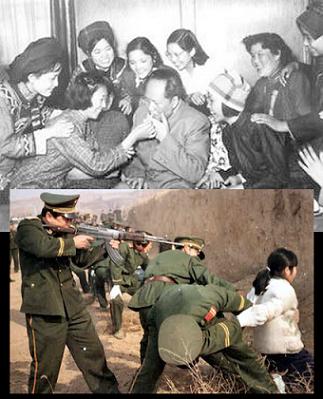

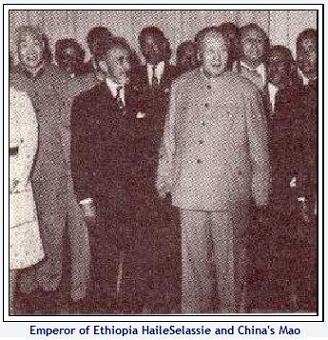
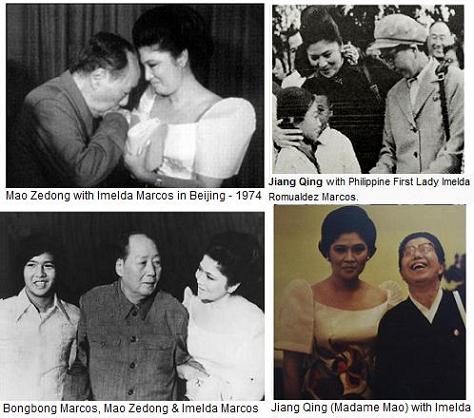
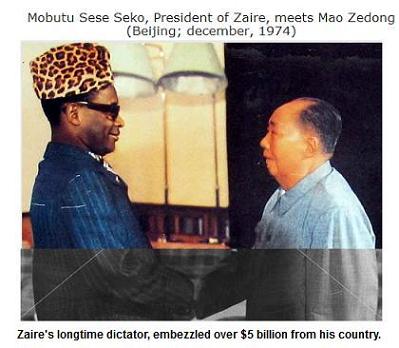
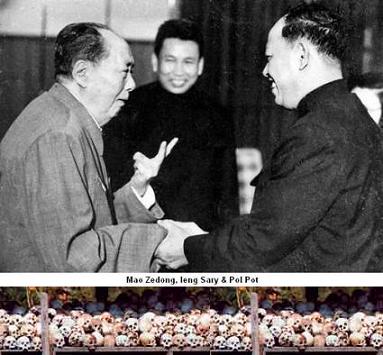
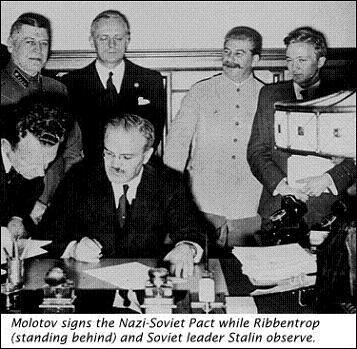
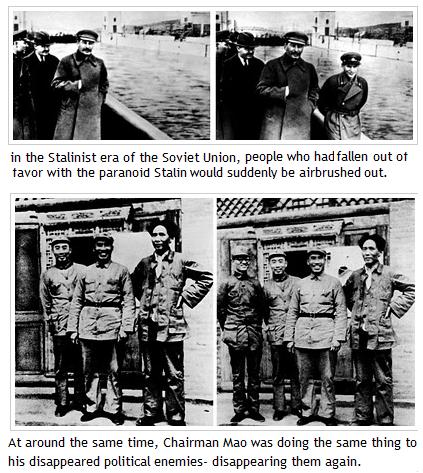
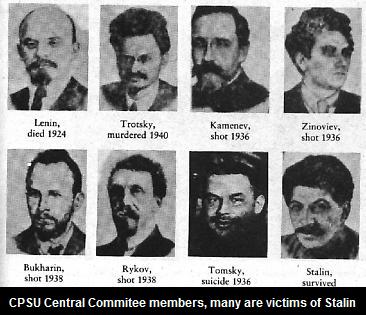
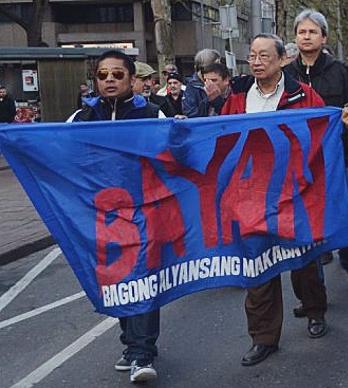
Add Your Comments
Latest Comments
Listed below are the latest comments about this post.
These comments are submitted anonymously by website visitors.
TITLE
AUTHOR
DATE
Notes towards a critique of Maoism
Sun, Nov 11, 2012 5:27PM
Differences Between Maoism & Marxism-Leninism
Thu, Nov 8, 2012 2:16AM
We are 100% volunteer and depend on your participation to sustain our efforts!
Get Involved
If you'd like to help with maintaining or developing the website, contact us.
Publish
Publish your stories and upcoming events on Indybay.
Topics
More
Search Indybay's Archives
Advanced Search
►
▼
IMC Network


